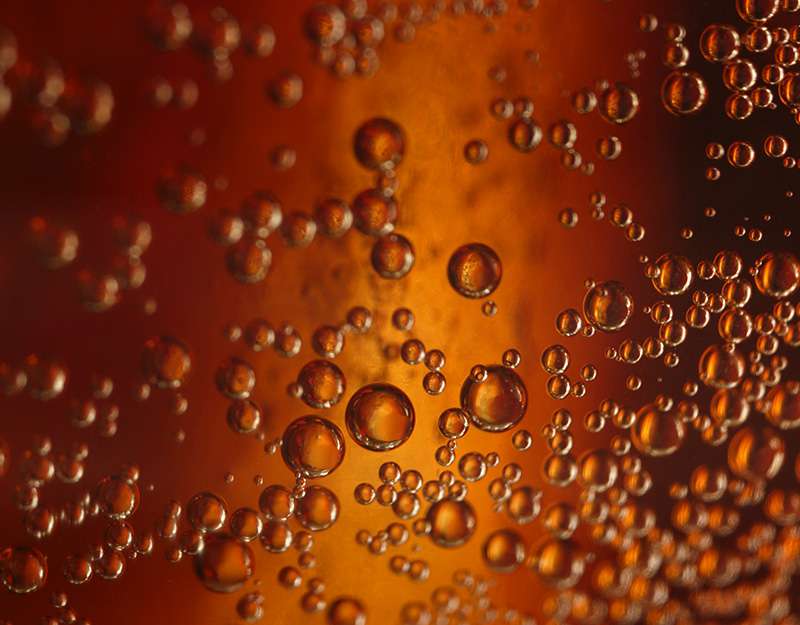Carbonation is the result of the interaction of carbon dioxide gas in the atmosphere with the alkaline hydroxides in the concrete. Like many other gases carbon dioxide dissolves in water to form an acid. Unlike most other acids the carbonic acid does not attack the cement paste, but just neutralizes the alkalinity in the pore water, mainly forming calcium carbonate that lines the pores:

There is a lot more calcium hydroxide in the concrete pores that can dissolve in the pore water. This helps maintain the pH at its usual level of 12–13 as the carbonation reaction occurs. However, as carbon dioxide proceeds to react with the calcium (and other) hydroxides in solution, eventually all the calcium hydroxide reacts, precipitating the calcium carbonate and allowing the pH to fall to a level where steel will corrode. This is illustrated in [1] Figure 4(a) and (b) which show the pH drop across the carbonation front and the corrosion rate of steel as the pH changes. At the carbonation front there is a sharp drop in alkalinity from pH 11–13 down to less than pH 8. At that level the passive layer was created by the alkalinity, is no longer sustained so corrosion proceeds by the general corrosion mechanism will takes place.



